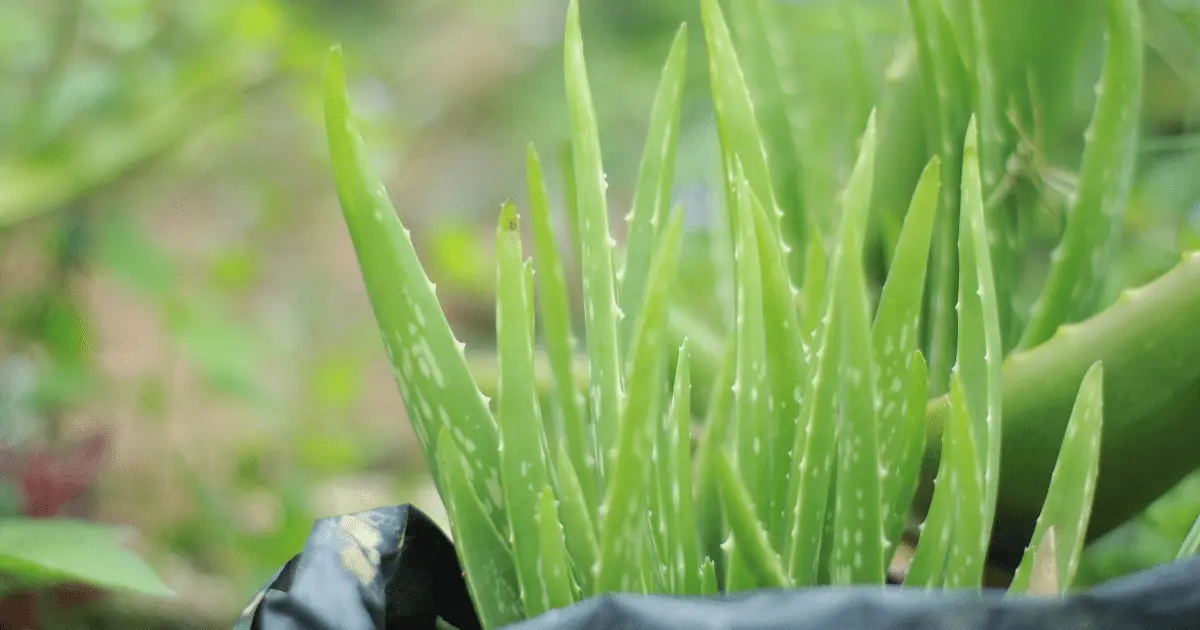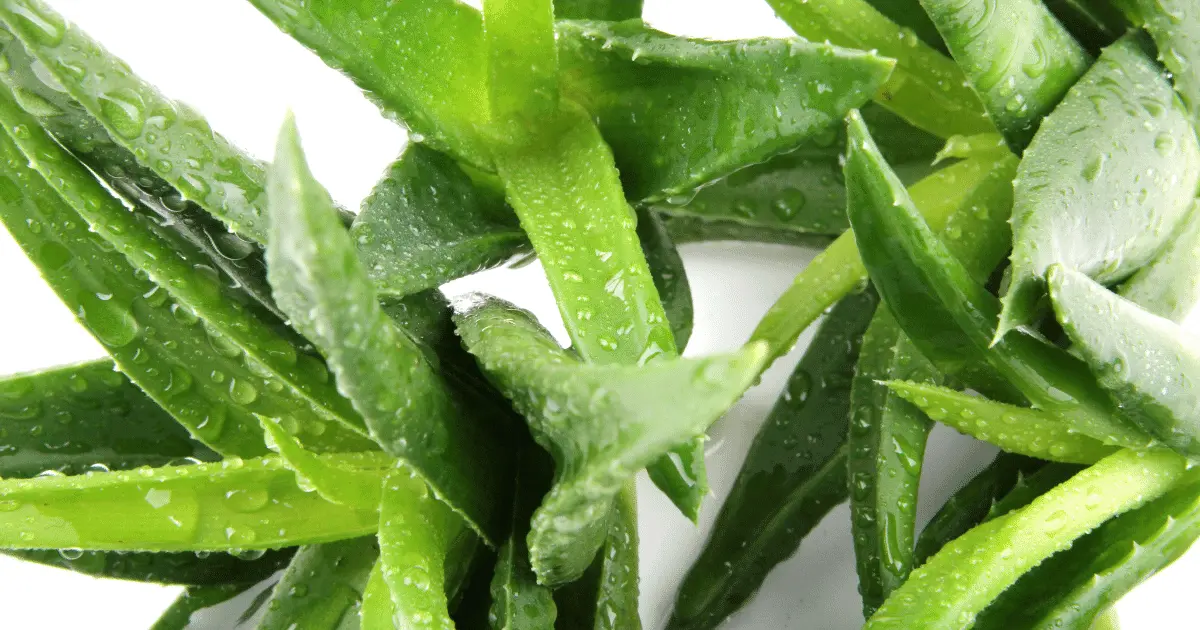I found a ton of helpful information after looking into what to do if an aloe vera plant freezes. As a result, I’ve written this post detailing the various options available if an aloe vera plant freezes. Sadly, aloe vera plants suffer greatly from freeze damage.
The duration of the plant’s exposure to freezing weather determines whether it can recover. The plant is likely irreparably damaged if it turns brown and has a squishy consistency. It might be salvageable if you can still make out some green leaves.
Keep reading to learn why aloe vera plants are vulnerable to the cold and what you can do to fix the problem and stop it from happening again.
Factors That Make Aloe Vera Vulnerable To Cold Damage

Aloe vera is a plant that grows well in both tropical and semi-tropical climates and is thought to have originated in the Arabian Peninsula. The plant can grow outdoors year-round in hot climates, with most regions experiencing peak growth in the spring and summer.
Due to their numerous beneficial qualities, which range from improving personal hygiene to promoting good health and treating wounds to even sprucing up your garden, they are frequently grown by many gardeners.
However, several factors make it difficult for the plant to thrive in colder climates.
Parts of Aloe Vera Plants that Makes Them Freeze
An aloe vera plant produces leaves covered in a clear gel primarily made of water. Although some glycoproteins are present in this gel, most of it is water. This fact shows why the plant can’t withstand temperatures below freezing.
Due to the plant’s chemical composition and the high amount of water in its leaves, it will quickly freeze if left out in the cold. If the correct guidelines are followed, the gel-like substance from within the leaves will stay safe from exposure to the cold. How much harm has been done is currently the only question that remains.
How To Determine Whether Frost Has Harmed An Aloe Vera Plant
There are a few telltale signs that an aloe vera plant has suffered frost damage. Its leaves typically change color to a yellow or brownish color, becoming squishy and mushy in texture.
Your aloe vera plant’s leaves are beginning to look somewhat glassy, indicating that the frost has hurt it. This is brought on by frost killing the plant’s delicate, soft tissue, and the inevitable rot and death of the good healthy parts of the plant usually follow.
The aloe vera plant’s outer leaves will at first, show these signs. Since the frost typically takes longer to reach the inner leaves, they are more likely to maintain their original shade of green. The aloe vera plant may still be salvageable if the center of the plant appears to be relatively healthy.
The Stages of Cold Damage in Aloe Vera Plants
When an aloe vera plant is exposed to cold temperatures, two types of damage can occur. These fall into one of two categories: freeze damage or frost damage.
With the proper care, an aloe vera plant with frost damage has a good chance of surviving. I’ll go into more detail about these two below. However, if the plant has freeze damage, it is more likely to be beyond repair, and the best course of action is to remove it and start over with a new plant.
Frost Damage in Aloe Vera Plants
It is not surprising that aloe vera has trouble surviving in the cold because it is a delicate plant and thrives in warmer climates. The plant suffers frost damage when exposed to temperatures below 40 degrees Fahrenheit.
Fortunately, aloe plants won’t necessarily perish when they sustain frost damage. The plant may still be saved even if the leaves have turned brown and started to wilt, so don’t be too alarmed if this happens.
Freeze Damage in Aloe Vera Plants
A more severe issue than frost damage is freeze damage. There is a good chance that succulent plants like aloe vera won’t be able to recover if they are exposed to temperatures below freezing for extended periods.
The leaves will eventually turn black, become crisp, and shrivel due to freezing damage. The frustrating thing about freeze damage is that you have to wait a few weeks and watch the plant to see if the damage has gone too far for recovery to be possible.
The length of time the aloe vera plant was exposed to subfreezing temperatures largely determines whether or not it can recover. The maximum time is a few hours, but if it has been an entire night, it probably won’t recover even after your best efforts.
What To Do If Your Aloe Vera Plant Freezes?

In this section, I’ll discuss your options for handling a frozen aloe vera plant and how to make the most of the situation. With this knowledge, your aloe vera plant will ideally have the best chance of regenerating and thriving again.
Let’s begin with some negative news. Aloe vera isn’t a particularly hardy plant and does not thrive in colder climates. The aloe vera plant will have a hard time surviving in freezing conditions if temperatures fall below 40 degrees Fahrenheit. When your aloe vera plants are frozen, you can only provide some care and then cross your fingers.
1. Check the Amount of Frost on the Aloe Vera Plant
If there was only a slight amount of frost on the plant, the damaged leaves could be removed, and it would likely recover quickly. If the entire plant has died from frost, it is time to get rid of it and start with a new one.
2. Check the Aloe Vera Plant’s Leaf Color.
The only reliable way to determine whether a frost’s damage to your aloe vera plant is irreparable is to observe how it looks. There is a high possibility that the leaves can be saved if some are still green despite the rest having shrunk and turned brown.
Unfortunately, it is likely that the plant will not be salvageable if the entire thing has turned brown, having spent a substantial amount of time in freezing conditions.
3. Set the Aloe Vera Plant Aside and Stop Watering It.
The aloe vera plant is particularly vulnerable to damage from the cold because of its warm natural growing environment. Due to its innate capacity to store significant water, it is not biologically adapted to withstand frosts.
If you suspect frost damage, it is a good idea to set the plant aside and refrain from watering it for a week or two. Watering the soil further prevents it from recovering because it will stay moist for a considerable time.
Since aloe vera is a succulent plant, it doesn’t need much water and doesn’t do well in wet soil. This explains why the plant can suffer such harm from frost. In the next section, we’ll delve deeper into what steps can be taken whenever an aloe vera plant has frozen.
How Can I Revive a Frozen Aloe Vera Plant?

Now that the gloom and doom have been cleared up let’s talk about some methods you can employ to revive your aloe vera plant, assuming the damage caused by the frost isn’t irreparable.
1. Prune Your Aloe Vera Plant
Typically, the best time to prune an aloe vera plant is in May, following the April flowering period. Pruning the aloe vera plant earlier than anticipated may be the only way to help it survive if it has been exposed to frost.
By carefully avoiding further harm to the parts of the plant that are still green and healthy, you can cut away the leaves from the plant that is obviously dead and discolored.
2. Keep Your Aloe Vera Plant in a Warm Place.
The plant needs to be kept in a consistently warm environment after the affected leaves have been removed, and the urge to water it should be avoided whenever possible.
New leaves will start to emerge, and the brownish color will eventually fade over a few weeks, indicating that the aloe vera plant is recovering.
3. Consider Using Agricultural Sulfur
Another method for reviving the plant is to apply agricultural sulfur to the cuts made when removing the decaying leaves. This is the best thing you can do to keep the plant alive, along with not watering it for a week and finding a warm location away from direct sunlight.
Aloe Vera plants are simple to grow and multiply as long as you follow some basic instructions.
How To Prevent Aloe Vera Plant From Freezing?
To avoid exposing the aloe to any freezing temperatures, follow these steps:
- Avoiding all forms of frost is the first step. Aloe leaves that have been damaged by frost will appear soft and glassy. In mature plants, only the leaf tips or specific leaves are affected. Long-term exposure to cold temperatures can completely harm an aloe plant’s roots.
- If you grow your plants outdoors, bring them inside as soon as fall arrives to avoid the possibility of exposure to frost. Additionally, avoid placing the aloe near open windows or frequently opening doors because cold drafts can be detrimental to the plant. Additionally, watering the aloe as little as possible is preferable.
FAQs
How Do You Keep an Aloe Plant Alive in The Winter?
You can grow aloe vera plants outside if your region experiences mild winters without freezing. However, if your winters are severe and frosty, bring the animals inside before the temperature falls below 40 F. They will go into dormancy, and if they grow at all, it will be very little. Watering them should be kept to a minimum during these times.
How Much of a Temperature Can an Aloe Plant Withstand?
Aloe vera plants can withstand summer temperatures of 50 to 60 degrees Fahrenheit, but they should never be exposed to temperatures below 40 degrees Fahrenheit in the winter. Bring it inside during that time to avoid having it frozen over.
Do I Need To Grow My Aloe Inside Or Outside?
Depending on the climate in your area, you can plant anywhere the conditions are suitable for Aloe Vera growth. Your aloe plant will thrive if you leave it outside in a sunny, warm area all year. The plant develops more quickly outside, where it is exposed to direct sunlight for most of the day.
The plant should be placed in a bright area of the room. Keep the plant outdoors during the summer and spring because these are the seasons when it grows the fastest. However, prepare to bring your aloe plant inside as Winter draws to a close to prevent it from dying in the cold weather.
Don’t overwater the plant; ensure it gets plenty of light when you keep it indoors!
